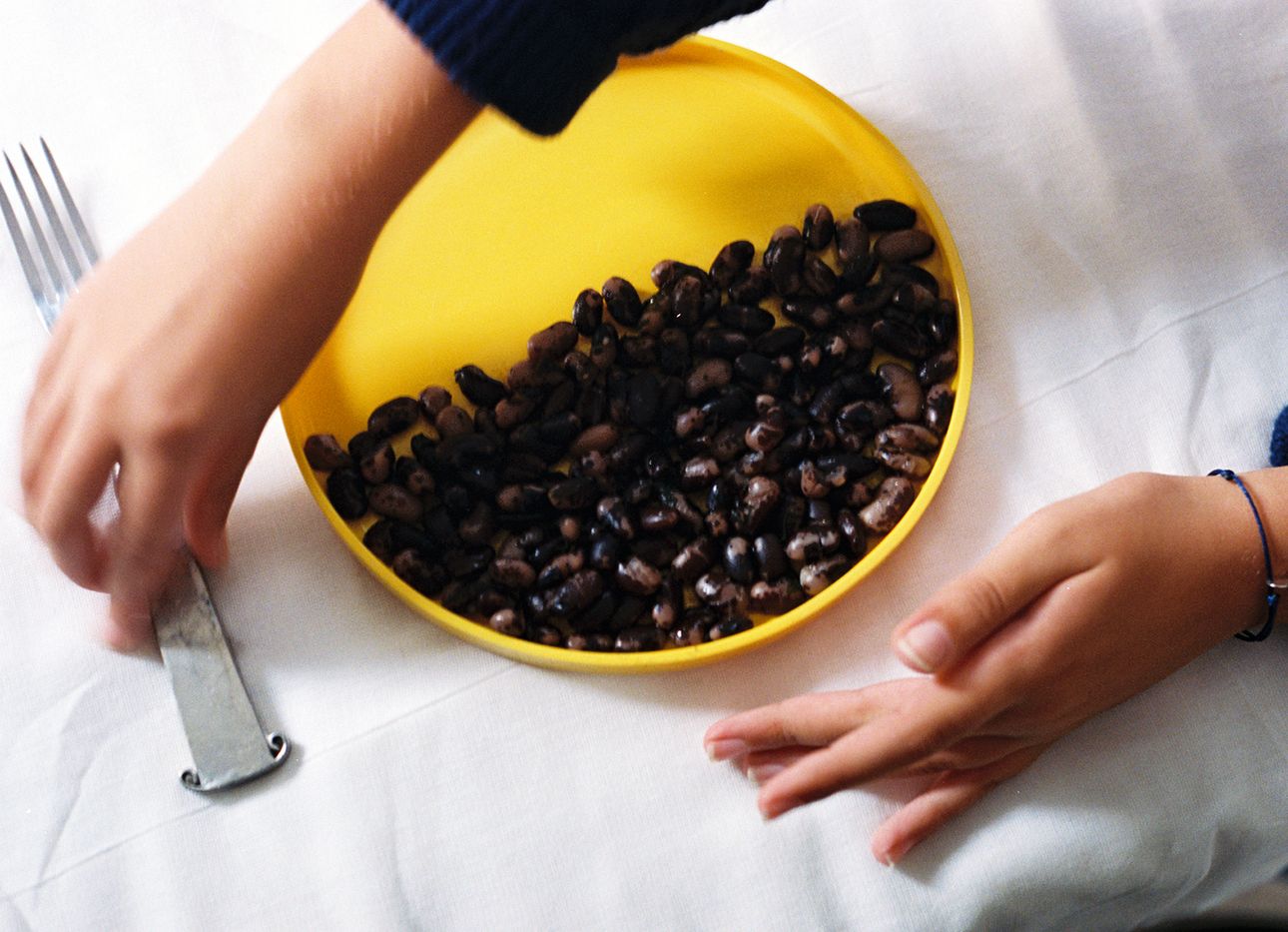
Food Artist Laila Gohar Simply Can’t Get Enough of Beans
Part edible sculptures, part performance pieces, food artist Laila Gohar’s multilayered creations are more than a meal—they’re an experience. Here, she tells us about one of her favorite ingredients to cook and eat: the humble bean.
I hear beans are your favorite food. What kinds do you like to cook?
I wouldn’t say I have a favorite food, per se, but I really like humble things that can be transformed with a few ingredients, like beans or potatoes—inexpensive things that are very versatile and act as vehicles of flavor.
I usually get my beans from this amazing place called Rancho Gordo. You can get them online, but you can also find them in stores. They’re different varieties of heirloom beans. This wonderful man, Steve Sando, works with farms in Mexico, California, and several other places to produce them. It’s amazing, the work that he does. Because of the lack of agro-biodiversity today, a lot of these heirloom varieties are dying off with the dominance of genetically modified crops. We depend very heavily on just a few crops: I recently learned that seventy-five percent of what we eat comes from just twelve different plant varieties and five different animals. It’s completely mind-blowing, and it’s really damaging our ecosystem to rely so heavily on just a handful of different crops.
There are so many foods I only learned to enjoy as an adult‚ including beans, maybe for that reason, or because they were usually undercooked, or canned.
Kids also don’t like brussels sprouts because adults boil the hell out of them, and make them just mushy and farty and gross. I’m actually writing a kid’s cookbook right now—Apartamento is going to be publishing it—about this very concept: that a lot of things children think that they don’t like, they don’t like because adults don’t prepare them properly. The recipes are all just for simple things, organized by ingredients. It’s just one recipe per ingredient, and they’re the same ingredients that I enjoy and eat regularly. There’s potato, fish, milk, chicken, egg, tomato—all basic things.
Where I come from, there’s no such thing as a kid’s menu; you eat whatever the adults eat. There’s no designated “kid food” or “special meal.” Children respond to flavors. They like things that are balanced, they like things that are acidic, they like salt and all the things we appreciate as adults.
How do you like to make your beans?
Soaking the them first really improves them, because then they don’t fall apart when you cook them. You have to plan a little bit in advance, but it’s not a huge deal. Just soak them in a bowl of water, overnight in the fridge, or on the countertop is fine, too. When I cook them the next day, I just put them in a pot with a few inches of water, and add whatever aromatics I have on hand. I really like to add bay leaf. I’ll also add half an onion, garlic, and some herbs, like parsley and cilantro. Sometimes I’ll add the stems of herbs that I’ve saved, from when I’ve used the plant for something else. I like to add the herbs at different points, so some get really cooked through, while others, like oregano or marjoram (which is a little more mild), I’ll add right at the end. It just depends on what I have.
Also, it’s really important to add a healthy amount of fat—some good olive oil, or maybe some leftover fat from another dish, like duck fat or drippings. I’ve heard people say that you shouldn’t salt your beans at the beginning, but I don’t really think that’s true: You’ve got to season things properly, from the inside out. Meaning, you season them throughout the whole cooking process. So I salt them in the beginning, and then I taste them toward the end and salt them again. The broth has to be kind of salty; that’s where you get the flavor from. Salt and fat really make everything come together, but specifically with beans, it’s essential.
Do you think your love for simple food stems from the fact that in your work, food is made playful, often quite experimental, and complex? It’s almost like a way of finding a work-life balance.
Yes, definitely, it’s very reactive. It’s like an inverse release, because I obsess over every detail when I’m working. There are layers to it. It’s a bit whimsical, for lack of a better word, and my reaction to that is to eat really simply at home. I don’t like fancy ingredients or over-the-top dishes, just simple things cooked really well.
This is going to sound a bit weird, but sometimes I crave foods that taste like nothing, that aren’t intense in any way. Like, there’s this one brand of rye cracker that’s really ordinary and maybe feels a bit like eating cardboard. I think most people find it repulsive, but I find I really like to not be overstimulated in that way. There are few things I’ll cook just for myself, and one of them is a flatbread that’s literally just salt, flour, water, and maybe a little bit of yogurt. It tastes like air.
I don’t have a hard time going to restaurants, I appreciate all kinds of food, and will make something nice if I’m cooking for other people or have people over—I mean, I wouldn’t make my friends eat cardboard. But eating, for me, is just a way to sustain myself in a very simple or elemental kind of way.